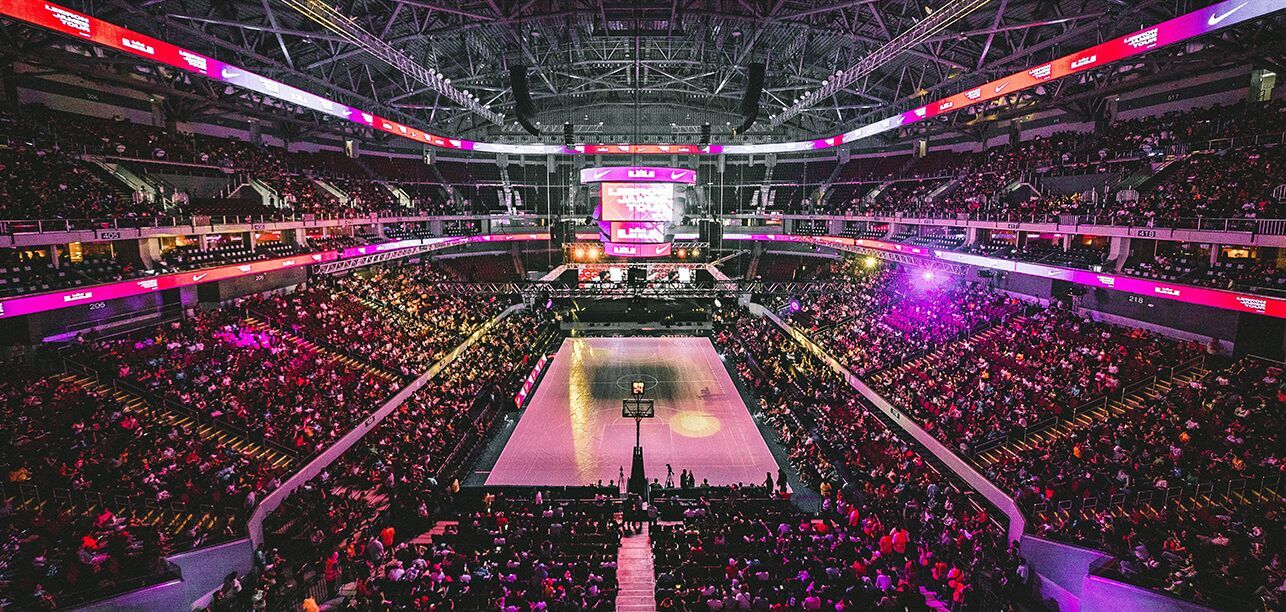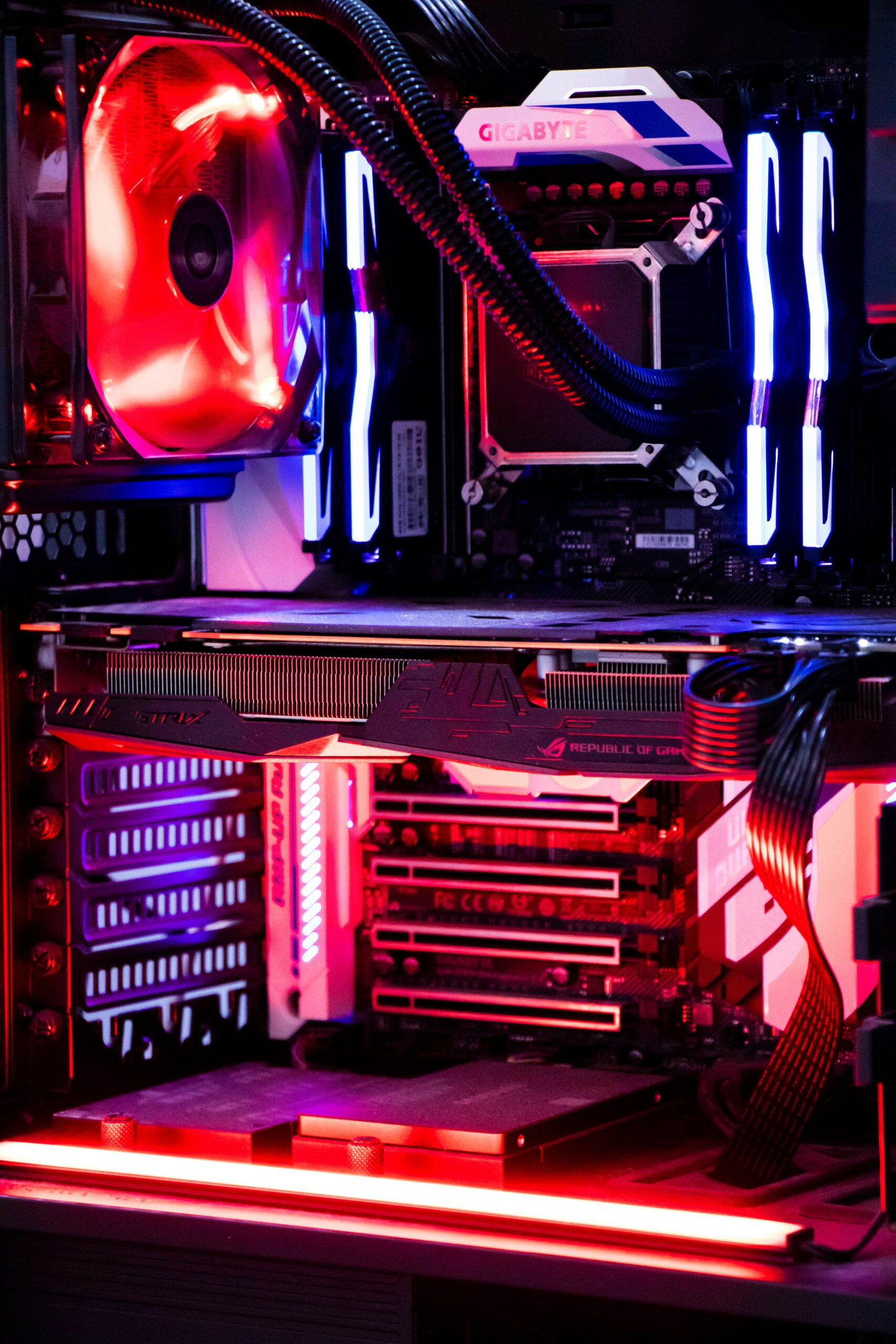Month: January 2018

Data Centers Are Here to Stay.
Data centers play an essential role in the storage and management of a company’s data and digital information.
Large corporations may opt to store their digital information within their own data centers on site. However, many organizations rely on other companies to run the data center and will pay for the power and space – this service is known as colocation.
Colocation provides safe, reliable and affordable options that are essential to the growth and operation of many organizations and businesses. But due to the integral role they play, colocation and data centers are often also subjected to industry myths and misconceptions.
Here are two of the most common misunderstandings about data centers and their services.
Myth 1: The Growth of Cloud Computing Will Render Colocation Obsolete
One of the most popular data center myths is that the rapid expansion of cloud computing and services will eventually eliminate the need for data centers and colocation services.
It is true that the cloud has grown astonishingly in the last several years and this growth is sure to continue to rise; however, fear of the cloud’s size and strength is misguided. The cloud has not replaced onsite servers, so it’s unlikely it will replace data centers and the need for colocation.
Many businesses make use of cloud services to facilitate and improve their businesses processes, but very few businesses move all their data to the cloud. In most cases, living completely out of the cloud simply isn’t feasible. Some organizations just feel more comfortable storing sensitive data on-site or in dedicated data centers. While cloud computing is certainly growing, it is not growing monolithically. And as a result, blended infrastructure, with both cloud and colocation environments, are among the most popular setups for businesses.
For example, a business may choose to outsource repeatable business practices, such as emails or internal documents to the cloud, but that same business would choose to keep sensitive information and data housed within a personal server within a data center.
The growth of blended infrastructure solutions means that both colocation and cloud services will continue to have a role in handling the IT infrastructure needs of the future.
Myth 2: Data Centers Can’t Handle New Workloads
A second myth is that current legacy data centers lack the capabilities necessary to handle new IT workloads.
These infrastructure doomsday scenarios generally focus on the assertion that data centers lack the physical space and necessary power to properly handle our modern IT needs.
But once again, the reality is far less dramatic than critics suggest. New technologies and innovations in cooling and power usage allow data centers to be radically more efficient. So, while the amount of data being processed may increase, the amount of power being used stays relatively constant.
It is true that data centers need to adapt to a changing IT landscape; however, this change can be both sustainable and gradual. Rather than focusing on the dramatic, data centers can improve upon existing equipment. Data centers can continue to train and retain good employees, thus keeping performance and efficiency running at an optimal level. While new problems and situations may arise, data centers can still thrive in the current IT environment.
How Can Data Centers Support My Needs?
Data centers continue to play a valuable role in handling IT needs for organizations and businesses. Finding the right data center for your business is often about finding the provider who can give you the services and products you’ll need to keep your business applications running smoothly.
INAP’s data center specialists can assess your organization’s needs and find the right plan that fits your scale, scope and budget. Contact us today to learn more about INAP’s data centers and colocation services.
Explore HorizonIQ
Bare Metal
LEARN MORE
Stay Connected

The Rise of a Multi-Billion Dollar Online Gaming Industry.
In the late 1990s, Marcus Graham was trying to make it as a professional gamer.
Known by his gaming tag as djWHEAT, Graham would travel to LAN tournaments across the country for varying sums of prize money.
It was a tough gig. For gamers in the early days of eSports, tournaments were few and far between with limited rewards. In an interview with CNN, Graham said he would spend $1,500 and travel more than a thousand miles for a tournament where he’d only win $800.
Fast forward about 20 years and the eSports landscape has drastically changed.
Graham is now a well-known eSports commentator (he still goes by the name djWHEAT), and eSports has moved from a pipe dream of gaming enthusiasts into domestic and international leagues worth hundreds of millions of dollars.
Major League Audiences and Payouts
Online gaming is now one of the world’s fastest-growing sports, with booming audiences in North and South America, Asia, and Europe.
Where other sports are generally defined by regional interests, online gaming has a major advantage. For instance, football is the most popular sport in the United States. In Europe and South America, soccer – a different kind of football – is king.
In comparison, eSports has followers all around the world, and the internet has given these fans a platform to connect and engage, which they are doing in extremely large numbers.
Consider this stat: More than 36 million people streamed the League of Legends World Championship match in 2015. That’s a larger audience than the number of people who watched Game 7 of the 2016 NBA Finals when LeBron James led the Cleveland Cavaliers to the city’s first professional sports championship in more than 50 years.
And eSports payouts aren’t cheap. In 2017, the International Dota 2 Championship in Seattle played to packed crowds at the Key Arena. The total purse was more than 20 million dollars – approximately double the total prize money of the Masters golf tournament.
Growing Corporate Backing and Investment for eSports
The meteoric rise of eSports is quickly catching the eyes and pocketbooks of interested investors.
There’s no better example of this than Blizzard’s Overwatch League. Created in 2017, the league has teams based on three continents who will eventually utilize “home” arenas in their local markets. The Overwatch League has garnered support from sports icons, such as New England Patriots owner Robert Kraft who recently purchased an Overwatch League franchise in Boston.
And Kraft isn’t alone. The NBA’s Philadelphia 76ers own two eSports teams, and several top European soccer clubs are also investing in online gaming.
Corporate sponsors are also taking note of the eSports phenomenon. Since the start of 2016, more than 600 sponsorship agreements have been signed (including one by INAP as the title sponsor for the 2018 Hi-Rez Expo). These sponsorships range from startups in smaller events to major corporations such as Red Bull, McDonald’s, and Coca-Cola for some of the world’s most popular competitions.
The Next Steps for eSports
It won’t be long before you see colleges and universities getting on the eSports bandwagon.
In 2014, Robert Morris University – a small private institution outside of Chicago – became one of the first schools to offer eSports scholarships for League of Legends gamers. The scholarships covered up to half of tuition and room and board, adding up to about $19,000 per student.
Just three years later, gamers can earn eSports scholarships at as many as 60 universities. Most of these schools are smaller or private colleges, but the University of Utah made headlines in 2017 when it became the first university in a Power Five athletic conference to announce a varsity eSports team. The team is sponsored by the school’s Entertainment Arts and Engineering Department, which The Princeton Review consistently ranks as one of the top video game design programs in the nation.
Beyond collegiate and world championships, gamers may soon have their eyes set on a more prestigious prize. Olympic officials are expected to discuss adding eSports as a medal event at the 2024 Summer Games. There’s been no indication if the Olympic International Committee will take this proposal seriously, but if eSports is added, it would legitimize online gaming as a global sport.
The Necessary IT Backing
Competitive gaming requires significant IT resources to operate. Networking and hosting must provide reliability, high performance, low latency, and scalability to match inevitable growth. Any disruption of service during a professional tournament would be completely unacceptable.
HorizonIQ’s online gaming infrastructure is built to withstand the rigorous demands of competitive gaming. With solutions in colocation, managed hosting, cloud, and network services, INAP has provided exceptional online gaming experiences for gamers and developers around the world.
If you’re searching for high-performance IT solutions to meet your eSports or online game development needs, contact us today.
Explore HorizonIQ
Bare Metal
LEARN MORE
Stay Connected

We are living in a digital world.
These days, everything from ordering movie tickets, to grocery shopping and even turning on and off your house lights can be done digitally from your cell phone – sometimes with just a thumbprint.
With this easy influx of information and new and innovative ways to make purchases, digital advertisers are trying new tactics to stay ahead of the curve.
Here are three digital advertising trends to expect in 2018 – and their impact on your infrastructure.
1. Mobile Advertising
It seems everything is done on cell phones these days.
In the United States, mobile devices have officially displaced desktops as the device with the highest internet usage. Not only do mobile devices take a greater share of the internet, but each year users also consistently increase their total mobile usage.
Gone are the days of simply launching mobile responsive ads or landing pages. To address this usage shift, expect advertisers to do more with apps and mobile-specific websites. This means companies will need to develop and run dedicated sites or applications for each platform. As you can imagine, this could quickly add demands to your servers and IT infrastructure.
[Tweet “Gone are the days of simply launching mobile responsive ads or landing pages.”]
It’s important to note that while many of the site visits will come from mobile, actual purchases are usually made on desktops – especially in the finance and banking industries. In these cases, advertisers will need to orient mobile ads towards research and prospecting, while keeping desktop ads conversion oriented.
2. Big Data Advertising
As advertisers focus on genuine customer engagement in 2018, except for big data to play a larger role.
For generations, advertisers focused on a handful of metrics such as the number of returns from an email campaign or the number of subscribers to a newsletter. Those metrics pale in comparison to the data available today.
For instance, the modern advertiser can have their customer’s clicking behavior, time spent on sites or social media preferences available in seconds. This information can help marketers know exactly when, where and on what platforms to engage customers.
3. Machine Learning
Machine learning will take the big data trend one step further. Detailed metrics will allow computer programs and algorithms to make more accurate forecasting and predictions in real time.
A good example is ad retargeting. With the use of machine learning, advertisers and marketers can retarget a customer’s purchasing preferences faster and with far greater accuracy and responsiveness.
Expect machine learning to become a staple of digital ad campaigns in 2018. Advertisers are already utilizing this technology to create unique messages and experiences specific to a user’s anticipated needs. With additional habits and analytics at our fingertips, this trend will really begin to customize the online sales process.
Investments in Improved Information Infrastructure
As advertising moves digital, increased stress will be placed on servers and IT systems. More eyes on pages means more traffic on servers. This can be a problem for advertisers who haven’t kept their infrastructure up to date.
Companies who are just getting their feet wet in the world of digital advertising often find their infrastructure is not prepared for the new traffic these ads will bring. The unfortunate result is unresponsive ads, slow loading landing pages – which causes users to leave – and a poor return on investment.
Expect digital advertisers to react with improved infrastructure and greater investment in IT. At INAP, we have the expertise and experience to keep your digital advertising running at optimal levels, even during peak periods of activity. Our data centers are located near major advertising markets, and we ensure that all our services meet the rigorous demands of your digital advertising environment.
Contact us today to learn how our high-performance, low-latency digital advertising solutions will help you meet and exceed your business goals.
Explore HorizonIQ
Bare Metal
LEARN MORE
Stay Connected

Advancements to Improve Patient Care.
Healthcare is one of the nation’s largest and oldest industries.
As a field focused on patient care and treatment, it’s essential for healthcare companies and product developers to remain at the forefront of technological innovations to provide better, faster, and more comprehensive care.
Here are four emerging technologies and trends that will shape healthcare innovation in 2018.
1. Augmented Reality
Augmented reality (AR) is one of the most exciting modern developments in healthcare. This technology changes a viewer’s vision while keeping them grounded in their surrounding reality.
AR technology can have many applications within healthcare. For example, augmented reality can be used by surgeons to help locate the relative location of a tumor within an organ.
Augmented reality can also be used to help patients and physicians better describe symptoms of diseases. Physicians can use augmented reality displays to show patients the potential complications that occur from treatment or the effects of delaying such a treatment. Augmented reality will help healthcare providers better model, visualize, and treat diseases and conditions.
2. Telemedicine
Telemedicine – the distribution of healthcare services or monitoring of symptoms through remote devices – is expected to continue its growth in 2018.
Telemedicine provides benefits in cost and efficiency, especially for populations in rural or geographically isolated areas. Patients who would otherwise be unable to receive treatment due to location can engage with healthcare providers remotely through telemedicine.
Telemedicine is moving from a novelty to a real treatment option. According to Mercer, 59 percent of large employers offered health insurance that provided telemedicine services in 2017. Increased coverage of the service has led to rising adoption rates as the practice becomes more available.
Telemedicine has also become more affordable to implement. When combined with increased patient information security and new technologies that make remote monitoring more efficient, telemedicine becomes a much more viable healthcare option.
3. Big Data in Healthcare
Improved technology will also play a role in the collection and analysis of big data.
The amount of collected data in healthcare is enormous. Everything from patient records to treatment outcomes is meticulously recorded, giving healthcare providers large data sets to work with. Analytics provides the ability to sift through and interpret large data sets, bringing quantitative insights to healthcare providers.
Consider the wellness devices or fitness tracker apps that many people are using. The data from these sources may soon be integrated with the records used by primary care physicians to provide a more comprehensive view of their patient’s overall health. This means providers will have the ability to more accurately diagnose diseases, offer better treatment options, and predict future complications.
4. Information Security
Information security is a technical hot button issue across all industries and healthcare is no exception.
Healthcare data is among the most sensitive and personal. Specific laws such as the Health Insurance Portability and Accountability Act (HIPAA) mandate that patient info is kept secure. Consequently, healthcare administrators must ensure that data is protected from hackers, who are getting more creative in their attempts to access restricted information. To address growing security challenges, healthcare providers will need to enhance and update their IT infrastructure.
Technological advances such as the proliferation of smart health devices bring their own security risks. Smart devices can be compromised if not properly patched and updated. Within a healthcare and personal information context, the compromise of such devices could be catastrophic. As technological solutions further permeate the healthcare industry, healthcare providers will need to work harder to safeguard their networks and devices to solidify their informational security.
Preparing for Healthcare Technology Advancements
With all of the technological innovation that will be impacting the healthcare industry, it’s more apparent than ever the need for a robust and secure infrastructure to power the systems that improve patient care and protect their information.
HorizonIQ provides affordable, dependable, and scalable infrastructure solutions to meet the growing performance demands placed on life sciences and healthcare technology companies. Whether your business needs additional storage options to stay ahead of an influx of data or services that ensure your company remains HIPAA-compliant, our experts have the solution to your infrastructure needs.
Contact us today to learn how your environment will benefit from HorizonIQ’s dedicated healthcare technology solutions.
Explore HorizonIQ
Bare Metal
LEARN MORE
Stay Connected

There’s a lot to be excited about.
A sold-out arena. Screaming fans. The best talent in the world.
No, we’re not describing a concert or even a playoff football game – although this event definitely had the same vibe.
We’re talking about Hi-Rez Expo – an online gaming conference and eSports world championship held each year by Hi-Rez Studios. This year’s event was sponsored by INAP.

For four days in early January, thousands of fans packed into Atlanta’s Cobb Energy Performing Arts Centre to watch the world’s best PC and console gamers battle it out for SMITE, Paladins and Hand of the Gods supremacy. Tens of thousands more fans watched the action live online.
And for the very first time this year, Hi-Rez executives held a keynote address to announce the studio’s plans for 2018 and beyond.
Here are five things we’re excited to see in the next year.
New SMITE Gods and Conquest Map
This news shouldn’t come as a surprise to SMITE gamers. Hi-Rez has been adding playable characters to its signature game on a fairly regular basis.
This year we’re seeing at least three new additions – Cerberus (a three-headed servant of Hades) and two unnamed gods from new pantheons, Slavic and Voodoo.
SMITE also revealed changes ahead of the fifth season of its pro eSports league. The conquest map is getting a makeover. Most notably, a new symmetrical design will mean that lanes and jungle paths will have the same layout, regardless of the side on which you start. Players will also notice new environmental artwork changes.
And possibly the most anticipated change for players is the return of jungle fog, which hides monsters and opposing gods from view if you have no characters in that area.
Paladins: Battlegrounds
At the beginning of the year, PC Gamer predicted more battle royale-style games in 2018.
Just days later, we’re introduced to Paladins: Battleground, a new game mode that calls itself the first hero shooter battle royale.
The game features 100 players battling to the death in a massive map that shrinks as the game progresses. Matches last for 20 minutes, during which players will team up to find weapons and kill other teams. Think Paladins meets the Hunger Games.
The best news? The new mode will be available for free to all Paladins players when it’s released later this year. And if the crowd reaction after seeing the trailer provides any indication, Paladins: Battlegrounds will quickly become a fan favorite.
Paladins Goes Mobile
Perhaps overshadowed by the Paladins: Battleground reveal was more news about the iOS and Android multiplayer online battle arena (MOBA) Paladins Strike.
Fans have been testing a development version of the mobile game for a few months. Now the general public is able to sign up to try it out prior to the game’s still unannounced release date.
Bot Smashers
Speaking of mobile, Hi-Rez gave us a sneak peek at its latest game, an iOS and Android strategy battler called Bot Smashers.
The presenters didn’t share much information about this game, other than users would be controlling robots to build their own bases and destroy their opponents. One key takeaway is that Bot Smashers is all about quick gameplay so matches are intended to be short.
No word on a release date, but fans can sign up now to test the game when a development version is made available.
Nintendo Switch Rumors
There was no mention of Nintendo Switch by any of the presenters during the keynote address. But when speaking to bloggers and reporters during the event, Hi-Rez CEO Erez Goren teased a project in development to bring one of its titles to the popular Nintendo platform.
Goren would not give a definite answer, opting to just say “maybe” when asked about the plans. So for now, we’re left wondering if the studio will try to port one of its existing games (after all, SMITE and Paladins are available on Xbox One and PS4) or will be planning something new for Nintendo’s more family-friendly demographic.
Hi-Rez Studios is Powered by INAP
Without a reliable and scalable IT infrastructure, Hi-Rez Studios wouldn’t be able to host such an incredible event and seamless gaming experience.
That’s where INAP comes in. For the past 10 years, we’ve been supplying high-performance, ultra-low latency managed hosting and network solutions to keep Hi-Rez games running smoothly with no lag time. Our scalable and flexible solutions provide 100 percent uptime, even during peak periods, which keeps Hi-Rez gamers happy and coming back for more.
We can provide the same level of service and quality for you too. Contact us to learn more about INAP’s solutions to power your gaming environment.
Explore HorizonIQ
Bare Metal
LEARN MORE
Stay Connected

The Future of Online Shopping.
The future is looking bright for eCommerce.
It’s no secret that more shoppers are turning to the internet to make their purchases. Just look at the record sales numbers reported by online retailers on Thanksgiving and Black Friday in 2017. During the same period, less money was spent at traditional retailers compared to previous holiday shopping weekends.
But what is driving these massive gains in market share and revenue for online retailers?
Here are three technology trends that will help online shopping continue its growth in 2018.
1. Voice Purchases
The future of eCommerce may run through voice-directed purchasing.
In 2017, 40 percent of millennials used a voice assistant prior to making a purchase. The proliferation of voice assistants – such as Siri, Alexa and Google Home – will ensure that number will continue to rise.
[Tweet “In 2017, 40 percent of millennials used a voice assistant prior to making a purchase.”]
A few businesses are already capitalizing on voice purchasing technology. In 2016, Domino’s allowed customers to order a pizza by speaking to internet-connected smart home devices.
Johnnie Walker, a distributor of Scotch whiskey, has also used voice assistance to help customers learn about their product and receive cocktail recipes.
Voice-directed purchases benefit both retailers and customers by reducing barriers and increasing accessibility. As voice-directed devices and online retailers become further integrated, voice purchases will drive even more eCommerce behavior.
2. Augmented Reality
Augmented reality (AR) is expected to take another big step forward in the world of online shopping in the next year.
AR changes aspects of a viewer’s surrounding reality while keeping the user grounded within their actual physical environment.
For example, customers can use AR to see how products would look in their homes or virtually “try on” clothing before purchasing. Sephora uses AR within a virtual makeup app that allows customers to see how beauty products would look on them before purchasing. And Home Depot’s mobile app lets customers use their phones to place anything from faucets to doors in their homes so they can see how it fits in before buying.
Using AR can break down the single greatest barrier to an online purchase – the inability to see or feel a product in person. Through AR, customers will be able to visualize and test out products before making a financial investment. This will greatly reduce both abandoned shopping carts, as well as product returns.
3. Chatbots and Machine Learning
Finally, 2018 will see greater and more widespread use of chatbots within portals.
Chatbots, or automated applications that simulate human conversation, have already made significant forays into eCommerce. For instance, there are already chatbots on Facebook’s Messenger app that can be used to purchase items, get health tips or call for a cab.
2018 will bring a greater availability of chatbots as well as more natural and helpful interactions. The original chatbot was a relatively simple application. By handling queries and answering specific requests, the chatbot mimicked human behavior. The real epiphany though came with machine learning. As data became more readily available, chatbots became more responsive and adaptive to user needs.
As a result, chatbots will be more intelligent, and thus more helpful for customers looking to make any financial transaction, whether it’s purchasing a new pair of shoes or booking a flight.
Infrastructure Driven eCommerce
Consumers only see the end-user technology designed to make online shopping easier and more user friendly.
They probably aren’t thinking about the most important part of their experience – the robust technical infrastructure that supports whatever app, website or platform they are using.
Successful online retailers require a powerful hosting service that can handle high traffic at any time. Customers will flee portals that do not load properly and won’t trust environments with slow or error-prone transactions.
At INAP, our team provides high-performance colocation, hosting and network services to ensure your online retail environment is lightning fast, even during the busiest shopping periods. Contact us today to learn more about our flexible and scalable options to improve your IT infrastructure and drive revenue.
Explore HorizonIQ
Bare Metal
LEARN MORE
Stay Connected

DNS for Disaster Recovery Site Failover, Explained
As a Disaster Recovery as a Service (DRaaS) provider, our solutions engineering team is fielded with a lot of questions concerning the mechanics of the failover process. One of the most popular: How are my customers and my data redirected to HorizonIQ’s hosted environment in a DR scenario? The short answer: We redirect traffic to a failover site using a standard DNS method.
For the (slightly) longer version, let’s dive into the process, as well as some of the terminology you’ll encounter along the way.

How Do I Use DNS for Site Redirection?
HorizonIQ provides fixed public IP addresses at the DR site. Since these addresses are known, it’s fairly easy to predetermine how they will be used at time of disaster (ATOD) or at time of test (ATOT). To understand how the redirect works, keep in mind the function of two important DNS record types:
A Record
A Records are the most commonly used type of DNS record. It simply points a domain or subdomain name to an IP address.
CNAME
A CNAME (or canonical name) is an alias record. This is used to point to a particular A Record.
Since the IP addresses are known and fixed for the production and DR sites, A Records can be created for each site; we then can use CNAME to direct to the active record.
Determining the Time to Live
Time to live dictates how long it takes for your DNS information to be refreshed. In a DR scenario, the time to live (TTL) for the CNAME should be fairly short so that it isn’t cached by a browsing computer for too long a period. If an event occurs, you want browsing computers to be redirected quickly and not have to wait for their cached DNS records to expire.
The minimum TTL is one second, but this puts increased demand on your DNS server or DNS service provider. Some DNS providers’ plans limit the number of DNS queries per second (QPS), so lowering the TTL might require that you also adjust to a higher-priced plan.
We typically recommend setting TTL to match or be shorter than your recovery time objective (RTO). You will also want to check with your DNS registrar to find out how long they update their zones. For example, VeriSign refreshes zones every three minutes, which would fit very well for this.
Let’s walk through an example of how the redirect will work given the following information:
- DNS domain of paulp.com
- Production site with an IP of 108.168.254.43
- DR site with an IP of 138.78.95.129
- RTO of 1 hour (60 minutes)
I’ll first create an A Record for the production site with a TTL of 60:
Prod.paulp.com 108.168.254.43
A BIND zone file (a text file describing your DNS zones) for paulp.com might look like this:
To test this, I can ping prod.paulp.com.
I can then create an A Record for the DR site:
dr.paulp.com 138.78.95.129
If I have an active server at the DR site, this is easy to test without interrupting production. I simply ping dr.paulp.com.
Now I can use a CNAME record to point to www.paulp.com to the production site during normal operations. A BIND zone file for this record would like:
If disaster strikes, I can change my CNAME record to point www.paulp.com to the DR site.
Note that for web servers running name-based virtual hosts, the host header in this case is still www, so the web server will detect it as such and still direct it to the proper content.
Overall, DNS redirection is a quick and simple way of redirecting traffic from one site to another during a DR scenario. The process does not require a large amount of automation or technical knowledge and can be done by most end users.
If you’re in the early stages of crafting your Disaster Recovery plan and don’t know where to start, we can help.
Explore HorizonIQ
Bare Metal
LEARN MORE
Stay Connected

Learning in the Online Classroom.
Online education has become a staple of modern learning.
Originally conceived as a supplemental tool to traditional classrooms, online education has emerged as a serious alternative to the physical classroom environment.
Rising costs for tuition and attendance, as well as greater exposure of online devices, has pushed the market for education away from brick and mortar schools to personalized curriculums online. And as data from online education becomes more available, you can expect education to become even more personalized and customizable to the individual student’s needs and expectations.
INAP has identified three tech trends that will shape online education and eLearning in 2018.
1. Gamification in Online Education
One of the first trends, gamification, has already been in use by several online educators.
For example, Khan Academy – a free online resource providing tutoring in subjects such as mathematics to art history – has used gamification since its inception. In Khan Academy, users are given experience points and badges as they complete courses and assessments. The in-game achievements simulate the progress-oriented narrative of popular video games.
This game-like behavior has been shown to increase student engagement and improve overall outcomes because learning models that incorporate game-like experiences provide an immediate sense of purpose and achievement.
Expect more eLearning organizations to utilize or improve their gamification techniques in 2018.
2. Augmented Reality in Online Education
Augmented reality (AR) is another emerging technology that can be applied to online education. This technology changes aspects of a viewer’s surroundings without removing the physical reality.
The potential for AR use in education is enormous. For instance, students learning about ancient history can use augmented reality to enter a Roman house or see themselves draped in the armor of a Roman centurion. The enhanced visual experience can help students better conceptualize and digest their educational material. This can be especially important for remote students, who can feel disconnected from their learning environments.
AR’s ability to foster interaction with learning materials gives the remote classroom a solution to help solve the physical disconnect between remote students. In addition, it can make the overall learning experience more fun and engaging.
3. Personalized Lessons in Online Education
Both AR and gamification play into our final trend, which is an increased personalization of the learning experience. After cost and accessibility, perhaps the single greatest advantage that online education has over traditional methodologies is the potential for personalization and customization.
In a traditional classroom, the instructor’s attention needs to be divided among several different students with different learning abilities; whereas, online education allows for students to each receive a tailored experience.
Much of this is possible because of the data-rich environment in which online learning lives. With rich data available, instructors can find trends and patterns that best fit their students’ needs. This is only going to increase as data becomes more available. Lesson plans and curriculums can be customized to fit student needs in both pace and depth of content. When students receive lessons that cater to their strengths and needs, their education benefits.
The Right Underlying Infrastructure
Proper online education providers need significant and reliable infrastructures to operate. You wouldn’t learn anything from an eLearning service with resources that are always unavailable or slow.
To prepare for the demands of online students, eLearning platforms and applications require solutions that are high performing with reliable uptime and low latency.
As an IT infrastructure provider, INAP helps some of the most successful education technology organizations with their performance needs. INAP has a variety of different solutions catered to the unique requirements of eLearning companies. Whether it’s colocation, managed hosting or cloud solutions, INAP provides data center services that will match your project needs and budget.
Contact us today to learn about our flexible and scalable solutions to keep your education technology at the head of the class.
Explore HorizonIQ
Bare Metal
LEARN MORE
Stay Connected

SUMMARY
HorizonIQ has become aware of security vulnerabilities affecting most known processors. These vulnerabilities were recently exposed by various security experts.
These vulnerabilities have been dubbed Meltdown and Spectre.
“These hardware bugs allow programs to steal data which is currently processed on the computer. While programs are typically not permitted to read data from other programs, a malicious program can exploit Meltdown and Spectre to get hold of secrets stored in the memory of other running programs. This might include your passwords stored in a password manager or browser, your personal photos, emails, instant messages and even business-critical documents.”- meltdownattack.com, January 5th, 2018
In most cases, local access to the computer is required to exploit these vulnerabilities. At the time of this writing, there are no known attempts to exploit these vulnerabilities.
A potential attacker with unauthorized access could execute malicious code through other applications to access memory from other processes.
Following industry best practices, HorizonIQ strongly recommends that customers keep their operating systems up to date and ensure that security updates are performed and vendor recommended patches are installed as well.
FIX
Listed below are links from vendors on how to patch the most popular server operating systems including
Ubuntu
Centos
Red Hat Entreprise Linux
Debian
Windows Server
VMWare
For operating systems not listed above, customers should contact their vendor for instructions and more information to address these vulnerabilities.
FIX IMPACTS
Industry feedback has indicated that there is a potential for performance impacts as a result of some patches. The reported impacts vary from minimal to noticeable latency on databases. HorizonIQ does not have precise impact details at this time. We will continue to monitor the information available for these vulnerabilities.
TECHNICAL INFORMATION
For more information and in-depth details please visit https://meltdownattack.com
Official CVE’s reported:
CVE-2017-5754
CVE-2017-5753
CVE-2017-5715
NEXT STEPS
INAP takes all vulnerabilities seriously. We are taking precautionary steps internally and with all partners and vendors regarding mitigation.
Information about these vulnerabilities is still developing and INAP is in constant communication with its partners and vendors.
INAP will keep its customers updated as more information becomes available. If you have any questions, please contact support at +1 877.843.7627.
Explore HorizonIQ
Bare Metal
LEARN MORE
Stay Connected

Game On!
In the world of online gaming, 2017 brought its own surprises, accomplishments and achievements.
From the explosion in eSports participation and viewing to growth in virtual and augmented reality gaming, 2017 set many of the trends that will likely continue to grow in the new year.
Here are four patterns you need to pay attention to in 2018.
1. The Growth of eSports Leagues
The first trend is incredible growth in eSports and eSports leagues.
What was once a pipe dream of gamers has become a multimillion-dollar industry. In fact, industry experts predict that eSports could generate more than one billion dollars by 2020.
Hi-Rez Studios runs one of the more successful eSports leagues and championships for its popular SMITE game. Now in Season 4, the SMITE Pro League includes teams from around the world competing on both PCs and consoles. Every match is streamed live on the internet, and fans have the option of purchasing season passes which grant them access to see every event.
Each season ends with the world championships at the Hi-Rez Expo held annually in Atlanta, which also includes competitions for Paladins and Hand of the Gods. (Shameless plug: INAP is the title sponsor at this year’s event.)
With more eSports leagues and competitions on the way, 2018 will likely see further increases in audiences, revenue and market share.
2. Virtual and Augmented Reality
The next trend is a continued push toward virtual reality (VR) and augmented reality (AR) technology.
While the initial buzz and hype behind VR have begun to subside, several publishers and manufacturers are making significant strides towards bringing the technology to a wider market through increased investment and more content.
And while still small by standards of the wider video game industry, VR technology continues to move into expanded markets and has sales figures to prove it. Oculus’s Gear VR recently shipped over five million units, and the PlayStation VR sold more than a million headsets in less than a year.
While developers continue to experiment with creative ways to implement VR into gaming, it’s more likely we’ll see advancements in AR technology in the next year. There hasn’t been a major AR gaming breakthrough since 2016’s Pokémon Go (Remember when everyone was running around your neighborhood trying to catch digital creatures?), but retailers have discovered unique ways to add AR into the consumer experience. In fact, IKEA has been doing it for years.
Since AR does not require the use of expensive equipment like headsets nor the need for as significant an investment compared to VR, it’s just a matter of time before an AR developer comes up with the next big online or mobile gaming sensation.
3. Diversity and Inclusion
Boys aren’t the only ones playing video games. More than 40 percent of all gamers in the U.S. are female, and this change in audience is being reflected on the screen.
More games are being developed that feature minorities, women and other underrepresented communities. We Are Chicago has earned critical praise for its unique storyline and depiction of an African-American growing up in the city’s South Side. Nintendo Switch’s highly anticipated Seasons of Heaven will tackle unique character viewpoints in a puzzle adventure game based on a protagonist with Asperger syndrome. And writers revealed in an Overwatch comic series that popular character Tracer is gay.
Expect this diversity and inclusion trend to continue in 2018 as an audience eager for roles that no longer play on stereotypes is influencing publishers and developers to craft stories that include more voices and perspectives than ever before.
4. Make Way for Indie Game Developers
Independent game publishers and studios are expected to take a big step in 2018. Independent game makers have been on the rise for the last several years, but their growth has accelerated with new trends and technology sharing to foster a democratization of game development.
One of the top reasons independent game makers can compete with industry giants is due to digital downloads. Independents create and publish games without being forced to make deals necessary to secure shelf space in retail stores. This has leveled the playing field and allowed smaller game makers to sell directly to their consumers and target audiences.
And it appears to be working, as more games are published every year. A 2016 study of all the games on Steam – a digital distribution store for online games – revealed nearly 40 percent of available titles on the service were released that year.
Full Speed Ahead in 2018
As the world of online gaming moves into 2018, the industry will move to adapt to its changing circumstances and environment. But some things will remain the same.
At the heart of every online gaming experience is a powerful and robust infrastructure that gives gamers a seamless adventure with no lag. Contact INAP today to learn how our high-performance IT infrastructure solutions and data center services can provide your users an optimal gameplay experience with low latency, even during peak periods.













